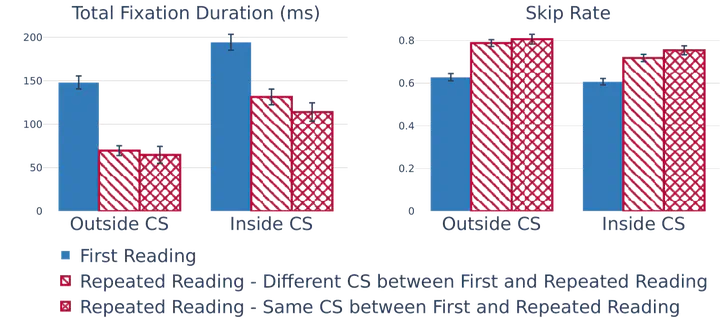Déjà Vu: Eye Movements in Repeated Reading

Abstract
From cooking recipes to novels and scientific papers, we often read the same text more than once. How do our eye movements in repeated reading differ from first reading? In this work, we examine this question at scale with L1 English readers via standard eye-movement measures and their sensitivity to linguistic word properties. We analyze consecutive and non-consecutive repeated reading, in ordinary and information-seeking reading regimes. We find sharp and robust reading facilitation effects in repeated reading, and characterize their modulation by the reading regime, the presence of intervening textual material, and the relevance of the information to the task across the two readings. Finally, we examine individual differences in repeated reading effects and find that their magnitude interacts with reading speed, but not with reading proficiency. Our work extends prior findings, providing a detailed empirical picture of repeated reading which could inform future models of eye movements in reading.